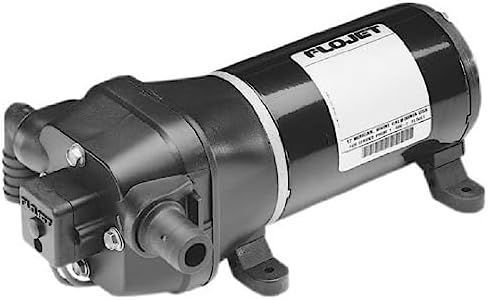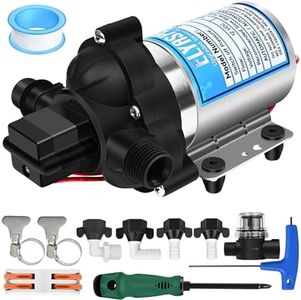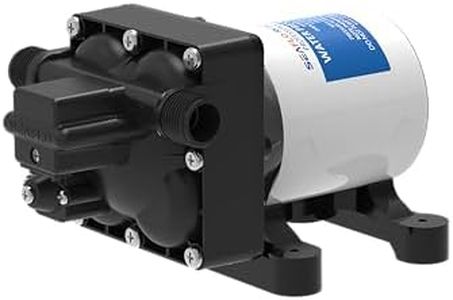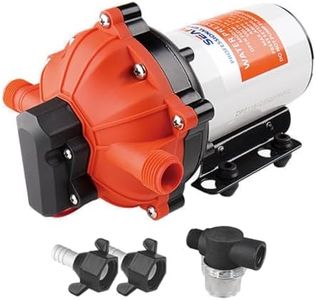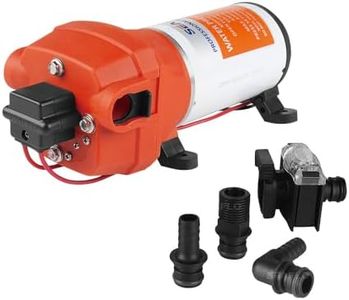We Use CookiesWe use cookies to enhance the security, performance,
functionality and for analytical and promotional activities. By continuing to browse this site you
are agreeing to our privacy policy
10 Best Rv Water Pump
From leading brands and best sellers available on the web.Buying Guide for the Best Rv Water Pump
Choosing the best RV water pump is all about ensuring you have a reliable, steady supply of water wherever your travels take you. Since RVs rely on portable water systems, the pump you select will determine how well water flows from your faucets, shower, and appliances. It's important to match the pump to both your RV's plumbing system and your specific usage needs. Consider the size of your RV, how many people will be using water, and what habits (such as showering, washing dishes, or running multiple faucets at once) will be most common. By understanding the critical specifications, you’ll be better equipped to choose the right pump for comfort and reliability on the road.Flow Rate (Gallons Per Minute, GPM)Flow rate tells you how much water the pump can deliver per minute, which directly impacts how strong the water pressure will feel. RV water pumps are typically rated between 1 to 5 GPM. Lower flow rates (1-2 GPM) are suitable for teardrop or small camper trailers with minimal water usage, while medium rates (2-3.5 GPM) work for most average-size RVs and provide enough water for basic needs. Higher flow rates (3.5-5 GPM) are ideal for larger RVs or when multiple people may use water at the same time. To choose the right flow rate, think about the number of faucets, showers, and appliances you use regularly, and make sure the pump can support your busiest water usage moments.
Pressure (PSI – Pounds per Square Inch)Pressure in PSI is what makes water come out of your faucets with force. Most RV water pumps operate between 40 to 70 PSI. Lower pressures (40-45 PSI) are gentler on older or basic plumbing systems, preventing leaks and damage, but may feel less powerful. Mid-range PSI (45-55) gives a balance of good system protection and pleasing water pressure. Higher pressure pumps (above 60 PSI) give a stronger flow, but you should only use them if your RV plumbing can handle it or else you risk rupturing lines. Check your RV’s plumbing system recommendations and select a pump that’s safely within that range, aiming for enough pressure to meet your comfort but not so high as to damage your RV.
Power Draw (Amps)Power draw refers to how much electrical energy the pump uses when running, which matters if you're running on battery power or limited electrical hookups. Smaller pumps with lower GPM and PSI typically require less power (often under 5 amps), while high-performance pumps can draw 7 or more amps. If you mostly camp with full electric hookups, the draw is less of a worry. If you boondock or rely on solar/battery power, lower amp pumps are better to help conserve your precious energy. Match the pump’s amp draw to your available electrical supply to avoid draining your batteries too fast.
Self-Priming AbilitySelf-priming means the pump can start pushing water from dry (when water is not immediately at the pump) without needing manual help. Not all pumps are equally capable in this respect, and the self-priming value often tells you the maximum height the pump can pull water from (measured in feet). For most RV users, a pump that can self-prime up to 6 feet or more is sufficient, as this covers most applications like drawing from an onboard tank. If you regularly set up in less-than-ideal positions with varying tank placements, higher self-priming pumps can be helpful. If your pump always sits below the water tank, this is less critical.
Noise LevelThe noise a pump makes can affect your comfort in the RV, especially at night or in quiet campgrounds. Noise level is influenced by the pump’s design (diaphragm style pumps are generally quieter), mounting, and vibration dampening features. Some pumps are specifically designed to operate quietly and come with rubber feet or other noise-reducing elements. If a quiet cabin is important to you, or if you're sensitive to mechanical sounds, look for pumps advertised as ‘quiet’ or with noise-reducing features, and consider proper installation to further minimize vibrations and rattles.
Automatic vs. Manual OperationAutomatic pumps have built-in pressure switches that turn the pump on when you open a faucet and off when you close it, providing seamless water delivery. Manual pumps require you to physically operate a switch to run water, which can be less convenient but gives direct control. For most users, especially those wanting home-like convenience, an automatic pump is the best pick. However, if you want full control or have a very simple system, a manual option could work.
Compatibility and Ease of InstallationCompatibility covers whether the pump will physically fit and connect to your RV’s plumbing, and if it operates on your RV’s voltage (usually 12V for most RVs). Ease of installation involves hose fittings, mounting brackets, and whether special adjustments are needed. Check the pump diameter, fitting sizes, and mounting space in your RV before buying. If you prefer to do your own maintenance, look for pumps labeled as easy-to-install or that come with standard fittings.
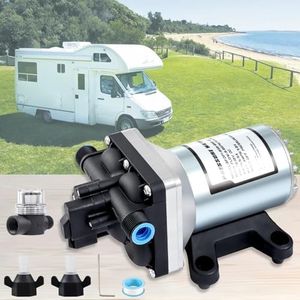
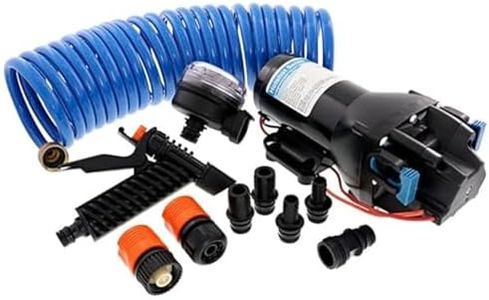
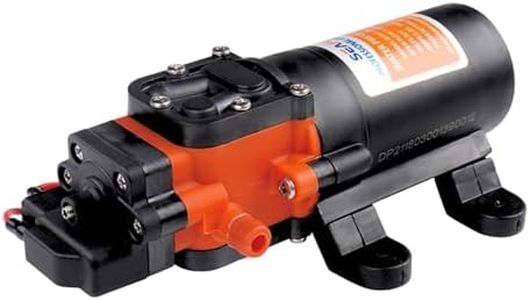
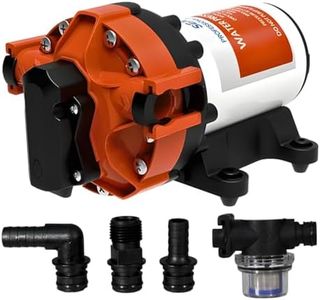
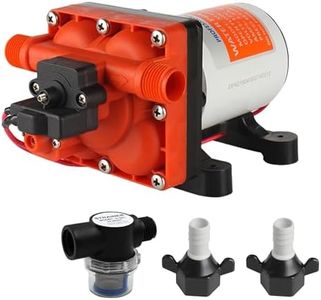

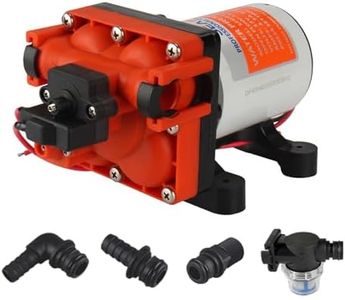
![[Upgraded Version] RV Fresh Water Pump, 12V DC 6GPM 70PSI Self-Priming Diaphragm With Pressure Switch and Strainer for RV, Marine, Yacht, Caravan](https://images-proxy.bestreviews.guide/cGGL6B92iyPEPLmGIHGqo_15ifM=/0x300/https://m.media-amazon.com/images/I/51dQbwz7X9L._AC_CX679_.jpg)
